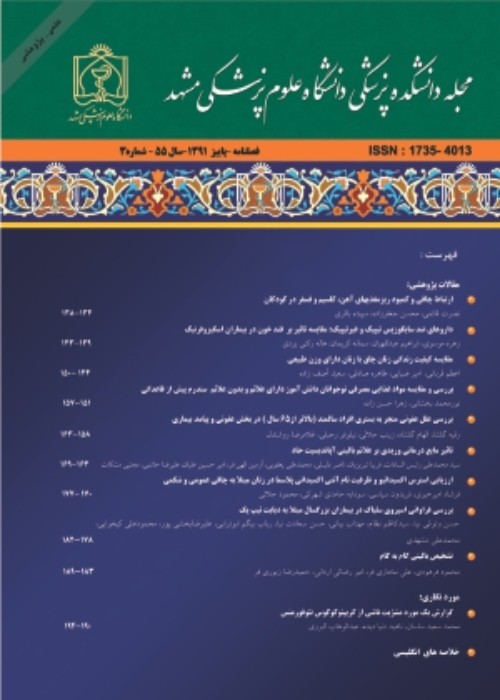Study of contextual factors (demographic, biological, familial, psychosocial) affecting the incidence of gender dysphoria in patients with gender dyphoria referring to legal medicine center of Khorasane razavi from 2015 to 2019
Gender dysphoria is a strong and persistent desire of the patient to be in the role and position of the opposite sex. Therefore, this study was conducted to investigate the demographic, biological, familial, and psychosocial factors affecting the incidence of gender dysphoria.
This descriptive cross-sectional study was performed among transgender applicants referred to the Forensic Medicine Organization of Khorasan Razavi Province during 2015-2019, of which 238 people participated in the study by available sampling. The data collection tool was a researcher-made questionnaire with an interview. Data were analyzed using SPSS 21 software and descriptive statistics methods (frequency and percentage).
Most of the female transgender applicants were single, aged 18-22, with a diploma, unemployed, with the predominant right hand with a history of self-harm and drug use. The highest frequency was reported in biological factors related to pregnancy stress, level of activity in childhood, history of severe trauma to the fetus and use of hormonal drugs by the mother. In family factors, the highest frequency is related to the average and poor socio-economic status of the family, normal and cold relations of parents with each other, parents' advisory role in life decisions, normal and cold relationship of parents with role models, being the last child, having at least one sister And a brother and the birth of a child of the opposite sex before the birth of the sample, education and occupation were respectively diploma and free for fathers and diploma and housewife for mothers and a history of psychiatric problems in parents. In psychosocial factors, most of the factors include reminding others about the similarity of behavior and personality to the opposite sex, feeling similar to the opposite sex, achieving real identity, imitating the opposite sex behaviors, playing and intimacy with heterosexuals, parents' lack of attention to doing Games of the opposite sex, contact with a heterosexual parent as a child, practical suicide attempts for being trans and damaging the primary genitals, and other cases.
Based on the research findings, it can be hoped that by educating and informing families and individuals in the community about the problem of gender dysphoria of this group of people and how to deal with them properly with the aim of supporting families with children with gender dysphoria and rejection Failure to do so, appropriate financial and social support of transgender organizations to perform gender reassignment surgery and the treatments needed by this segment of society, to take appropriate action to reduce their social problems and harms.
- حق عضویت دریافتی صرف حمایت از نشریات عضو و نگهداری، تکمیل و توسعه مگیران میشود.
- پرداخت حق اشتراک و دانلود مقالات اجازه بازنشر آن در سایر رسانههای چاپی و دیجیتال را به کاربر نمیدهد.




